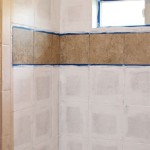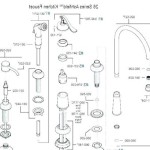How Do You Measure a Bathroom Sink Faucet Height?
Choosing the right bathroom sink faucet involves more than just aesthetics. Functionality and user comfort are paramount, and a key factor determining both is the faucet height. Understanding how to measure faucet height correctly ensures optimal sink usage and prevents splashing, while also complementing the overall bathroom design.
Key Measurements for Bathroom Sink Faucets
Several key measurements contribute to the overall faucet height and its relationship with the sink:
- Spout Height:
- Spout Reach:
- Deck Clearance:
1. Spout Height
Spout height is the vertical distance between the base of the faucet (where it mounts to the sink or countertop) and the faucet's spout opening. This measurement dictates how much space is available between the spout and the sink basin. A taller spout provides more clearance for handwashing and filling larger containers, while a shorter spout offers a sleeker look and can minimize splashing in shallow sinks.
2. Spout Reach
Spout reach measures the horizontal distance between the center of the faucet base and the center of the spout opening. This determines how far the water stream extends into the sink basin. An adequate spout reach ensures water flows directly into the drain, preventing splashing onto the countertop. It also impacts user comfort, as a suitable reach allows for easy handwashing without leaning too far into the sink.
3. Deck Clearance
Also known as air gap, deck clearance refers to the vertical distance between the highest point of the spout opening and the top rim of the sink basin. This measurement is crucial for preventing backflow, where contaminated sink water could potentially be siphoned back into the water supply. Plumbing codes often mandate a minimum deck clearance to ensure sanitary conditions.
Measuring Existing Faucet Height
Measuring an existing faucet can be helpful when replacing a fixture or planning a bathroom remodel. Using a measuring tape, follow these steps:
- Measure from the base of the faucet to the spout opening to determine the spout height.
- Measure from the center of the faucet base to the center of the spout opening to determine the spout reach.
- Measure from the highest point of the spout opening to the top rim of the sink to determine the deck clearance.
Measuring for a New Faucet Installation
When installing a new faucet, consider these factors to determine the appropriate height:
- Sink Depth and Shape: Deeper sinks can accommodate taller faucets, while shallow sinks require shorter spouts to minimize splashing.
- Countertop Height: The height of the countertop relative to the floor influences the overall ergonomics of the sink area.
- User Preferences: Personal preferences regarding water pressure and splashing should also be taken into account. Some individuals prefer a higher spout for increased clearance, while others may prefer a lower spout for a more streamlined appearance.
Tools for Measurement
Accurate measurements are essential for a successful faucet installation. The following tools are recommended:
- Measuring Tape: A flexible measuring tape marked in inches and fractions of an inch is essential for determining faucet dimensions.
- Level: A level ensures the faucet is installed straight and plumb, preventing uneven water flow and potential leaks.
- Pencil: A pencil is useful for marking measurements and indicating the desired faucet location on the sink or countertop.
Considering Faucet Styles and Functionality
Different faucet styles offer varying spout heights and reaches. Consider the following:
- Centerset Faucets: These faucets have a single base plate with handles and spout integrated, often featuring shorter spout heights.
- Widespread Faucets: These faucets have separate handles and spout, offering greater flexibility in spout height and reach.
- Vessel Sink Faucets: Designed for vessel sinks that sit above the countertop, these faucets typically have taller spouts to accommodate the increased sink height.
- Wall-Mounted Faucets: These faucets are mounted directly to the wall, offering customizable spout height and reach and a modern aesthetic.
Importance of Proper Height for User Experience
The correct faucet height significantly impacts the overall user experience. An appropriately sized faucet ensures comfortable handwashing, easy filling of containers, and minimizes splashing. Careful consideration of these measurements during the selection and installation process contributes to a functional and aesthetically pleasing bathroom environment.
Common Mistakes to Avoid
Avoid these common errors when measuring for a bathroom sink faucet:
- Not accounting for sink depth: Choosing a faucet that is too tall for a shallow sink can lead to excessive splashing.
- Ignoring spout reach: A spout reach that is too short can cause water to flow onto the countertop, while a reach that is too long can make handwashing awkward.
- Overlooking deck clearance: Insufficient deck clearance can create a backflow risk, potentially contaminating the water supply.
By carefully measuring and considering the various factors influencing faucet height, homeowners can ensure a comfortable and efficient bathroom experience.

How To Measure A Bathroom Faucet The Home Depot

Mondawe 11 In Faucet Height Double Handle 8 Widespread Brass 3 Hole Bathroom Sink Bath Faucets Matte Black Md1516b The Home Depot

How To Measure A Bathroom Faucet The Home Depot

How To Measure A Bathroom Faucet The Home Depot

How To Measure A Bathroom Faucet The Home Depot

How To Choose Your Kitchen Sink Faucet Riverbend Home

Wall Mounted Faucet Height What You Need To Know Biblus

Home Interior Design Tips Bathroom Dimensions Floor Plans Wall Mount Faucet

How To Measure A Bathroom Faucet The Home Depot

Standard Height Of Bathroom Fittings Fantasticeng
Related Posts







